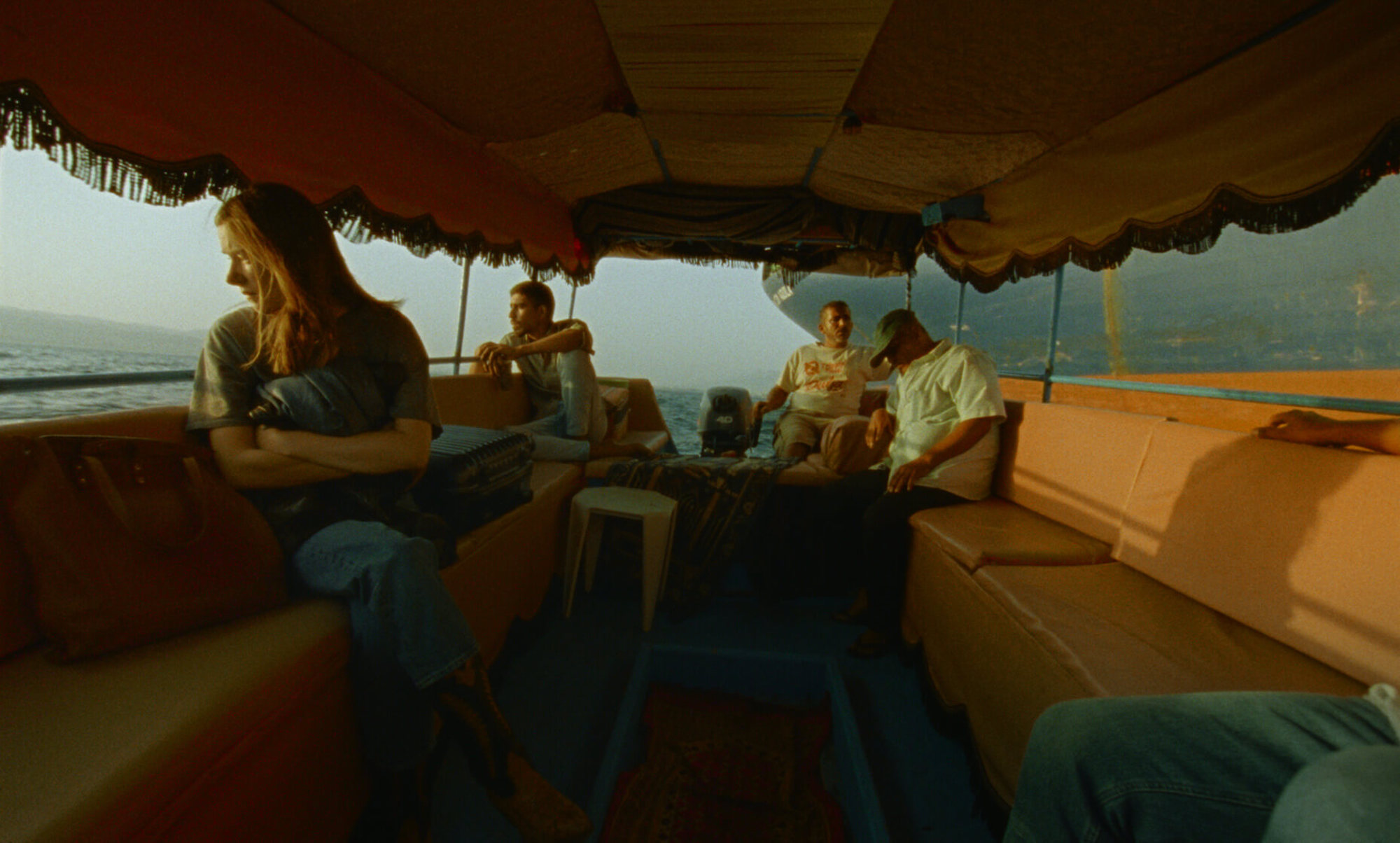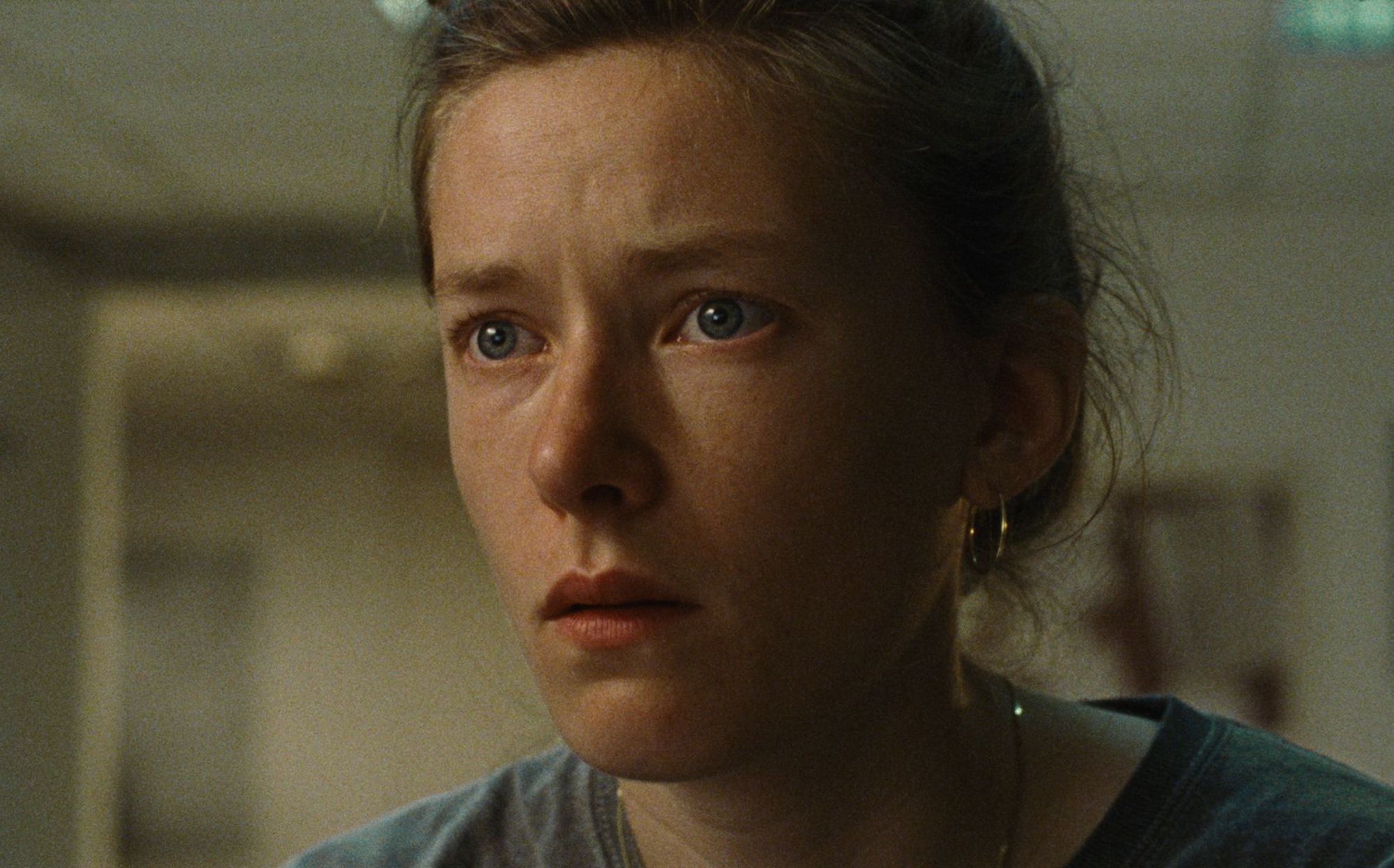
Premiering at the Directors’ Fortnight at Cannes, Faris Alrjoob’s The Red Sea Makes Me Wanna Cry is a tale filled with shimmering mysteries, utilising elliptical storytelling, enigmatic voiceover and a strong command of camera movement and tone to suggest multiple hidden meanings lingering in the background. His thesis film at the Academy of Media Arts Cologne, The Red Sea Makes Me Wanna Cry sees the Jordanian filmmaker travel to Aqaba – a tourist hotspot situated between Israel and Saudi Arabia – making excellent use of location to suggest an almost dystopian, forgotten world, imbuing our protagonist’s journey to learn more about her long-lost lover with a keenly felt sense of time and place. We had the chance to talk to Alrjoob ahead of the film’s world premiere yesterday about shooting on Super 16, the benefits of a 1:66:1 frame and how his lead actress, Clara Schwinning, is like a young Tilda Swinton.
So you’re from Jordan, but you live in Germany. Was it always interesting for you to create a film that straddles both cultures?
My co-writer Matthew LaPaglia wrote a short story that I found very, very touching. I asked him if I could develop it into a film and potentially direct it. Then we shelved it for a while before coming back to it two years later. I think at the core of it, it’s a story about unrequited love. But we’ve added some thriller elements because I thought it would be interesting to explore how some partners, in love or otherwise, become ghosts in our lives, and how that feels when you’re stuck in a world where they only exist in that way.
For me, it’s this mysterious exploration of closure because she’s going there to figure out who he really is. But there is all this elliptical editing and strange moments. How did you want to explore this theme, and then maybe frustrate it? Was this in the script or did it come through editing?
I work for a long time on the stuff that I make, and I change, and the work changes as well. For me personally, I’m never really interested in knowing exactly what the finished product will look like but I’m very interested in the questions that it brings and exploring that with collaborators. So the script is different than the film we shot and it’s different than the film we have edited. Yet, somehow, I reread the script recently and we’ve come full circle, returning to ideas that we had in the first drafts.
I’m never really interested in knowing exactly what the finished product will look like but I’m very interested in the questions that it brings.
But it changed a lot in the edits. It became a lot looser and the thriller elements really kicked in, as the question of related love had somewhat resolved itself. So it transformed into a contemplation of what love means, what are the politics of desire, how do we deal with that, and what is closure. I’m not sure every viewer would agree with that, but to me, it’s also like a contemplation on the myth of Orpheus or Lot’s wife. The idea of having to burn or go to an underworld to discover something about love.

You shoot a fair amount of the film in Aqaba, which is the only Jordanian city on the Red Sea. It sounds like a fascinating place as a result of its geography. Did you always want to shoot there?
I mean, we tried to create a fictional town composed of different places in Jordan which we then stitched together. But of course, Aqaba is the only coastal town, so to me, it’s really interesting because there are also these desert mountains in the background of everything. The sea, a very fluid, freeing thing, contrasted with these hard things that don’t move, creates a sense of timelessness that is really visually interesting on film but also reflects how we, and the character, felt during the film.
We were really trying to find something specific; things that are still stuck somewhere in the past.
Was there a lot of going back and forth in order to find the right locations?
It started a while ago. We started scouting and then the pandemic happened, then we left it for a while and came back. My Cinematographer Mahmoud Belakhel, Production Designer Alina Musiol and I travelled and stayed at these little motels in order to try and understand these places. Because we were really trying to find something specific; things that are still stuck somewhere in the past. It’s not a period piece right, but we play on that. We talked about the aesthetic of the 70s but we never tried to push that and pretend it wasn’t today.

Talking about arthouse aesthetic and European films from the 60s and 70s, you certainly achieve that vibe with the Super 16. And you use a very interesting aspect ratio that we don’t often see: 1:66:1. Of course, it’s the aspect ratio that comes with Super 16, but was it a conscious choice regardless? What were the advantages of this kind of frame?
It is, of course, the native aspect ratio of Super 16, so that was always there. But a lot of our visual inspirations had also used it. Of course, 4:3 looks great, but I feel like it’s been used so much. To me, it’s very present when it happens, especially with young filmmakers starting out. And widescreen kind of limited us. We like faces a lot, we frame a lot of faces in this film, and I think 1:66:1 is really good for framing because it gives you that height and is also wide enough to present you with the rest of the image. This was a conversation that we went back and forth on a lot, but 1:66:1 always felt right. It felt visceral, like something you could touch, which we hoped the image would feel like as well.
In every film, I’m always trying to create an amazing end scene with music.
What did Clara Schwinning bring to the role? Did you always have her in mind?
I was writing on another project with a colleague of mine. We took a break and went downstairs to the screening room because they were showing some exercise films. I saw this person and jotted down her name. I think she’s amazing. Sometimes I think there’s something wrong with a line or a scene and then she says it and it’s like, “Oh no, we’re good.” I like to invite the performers to take ownership of the characters you know, because I feel like my role is just to watch, curiously. Clara has that, she has this strength in showing vulnerability, which I feel is very generous and very rare. She’s like a young Tilda Swinton! That’s sort of a running joke we talked about with the crew.
I loved the song, Teflemni Leh by Idreesi at the end. It gives an unspoken catharsis to the hero and ends things with a certain mystery. Tell me about why you picked this song.
In every film, I’m always trying to create an amazing end scene with music. I’m hoping it has worked out here. Idreesi is this amazing musician based out of Jordan, and a good friend as well. With some others, he’s starting this new wave of pop that’s really specific to the region and multi-layered. It’s very intellectual yet very accessible and we always talked about making a film that feels like a pop song. We didn’t want anything heavy. We wanted something that’s light and melodic and lyrical. This song touches me personally, I really love this music, and I asked him to perform in the film itself. He came in for a day, very generously, and it was great.

What does it feel like to be a part of this year’s Directors’ Fortnight?
Oh man, it’s a dream. It’s still surreal. I just feel immense gratitude to the world and my team. I found out when I was in transit. I was going to Jordan to visit my parents about a month ago and I found out in a Turkish airport. It was a long layover. I hadn’t slept the night before. I woke up the next day and for a second I wasn’t sure it really happened. I had to check my emails again to read it.
What are you working on next?
I’m developing a few things. I don’t know how much I can say about them because I’m still writing and very superstitious while writing. But yeah, I’m developing something that’s very interesting. It’s again a story that happens between the Arab region and Europe. A period piece potentially. A lot of politics, a lot of romance, some erotic elements. I hope I get to make it quickly and don’t have to wait for ten years.


